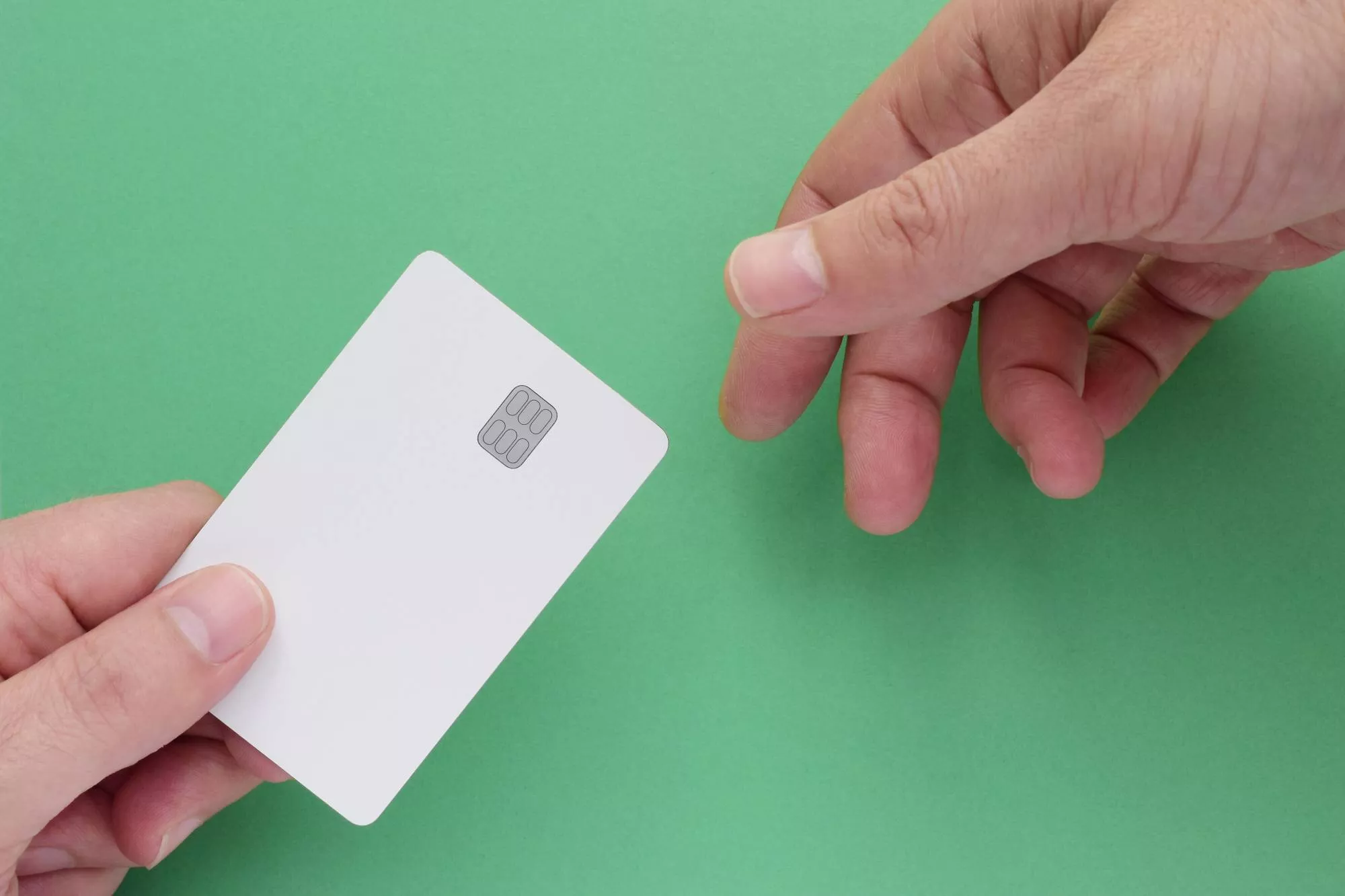
TABLE OF CONTENTS
When you decide to start a new business, there are many details to figure out. From setting up a website to sourcing products to finding a way to accept payments from your customers, nothing comes quite as easily as it feels it should. In this post, we help you figure out the latter—namely, how to accept payments from your customers. To do so, we explore some common options, such as a payment service provider (PSP), and compare such to a standard merchant account. Let’s dive in!
What is a PSP (Payment Service Provider)?

Accepting credit and debit cards can increase your average transaction size significantly. An average cash transaction is $22, which pales in comparison to the average transaction of $112 on a card.[1]Experian. “Cash vs. Credit Cards: Which Do Americans Use Most?“. Accessed November 17, 2023.. That said, the potential revenue increase more than offsets the cost of accepting non-cash payments. But how do you start accepting these payments? The simple answer is that you’ll need to connect your business to the payment grid.
So, what is a payment service provider?
A payment service provider, or PSP, is a type of third-party company that connects you to payment grids. They make it possible for you to accept debit and credit card payments, as well as other types of payments, from your customers. Put differently, payment service providers create a link between your bank, your customer’s bank, and the credit card networks so money can move freely between them. Examples of PSPs include Square, Paypal, Venmo, and Stripe.
You can think of payment service providers like a phone service provider. If you sign up for payment processing through a payment service provider, it’s like having a phone line on a family plan. They are the main account holder and are offering you a line in the sense that they offer a portion of the services available to their account as a whole.
How do payment service providers work?
As we touched on, a payment service provider connects your business to broader financial networks, allowing you to accept non-cash payments from your customers. However, you may wonder how this connection works.
Once you create an account with a payment service provider, you can quickly start accepting payments from your customers. The PSP creates a sub-account under their umbrella (or, to continue the analogy, a line on their phone plan) that allows your payments to process through their connection to the network (their merchant account).
Here’s how the payment process looks step by step once connected:
- You initiate a transaction with your customer, either online or in-store. They swipe, tap, dip, or key in their card information. Their personal information and the transaction information are bundled together into an authorization request that gets sent to your PSP.
- Your payment service provider takes the information bundled within the authorization request and sends it to their merchant services account holder.
- The merchant services account holder verifies the cardholder’s information. To do this, they check the available funds, identification information, etc.
- Once they’ve verified the transaction, they send the information back. At this point, you receive an “approved” or “declined” notice.
The role of card brands and issuing banks
When you sign up to accept payments, you’re creating an agreement with a merchant account provider or payment service provider. They are the only company you will pay each month, so it’s easy to assume they are the only company involved in running transactions. However, they are only one of several companies involved.
The fees you pay each month are split among three major categories of stakeholders. Below explores the other parties involved in processing payments:
- The Card Brands – Companies like Visa, Mastercard, and Discover are known in the industry as card brands. They regulate who can accept credit and debit cards, what items can be purchased using debit and credit cards, and more. They charge association fees for their involvement in the transaction.
- Issuing Banks – The next major party involved is the issuing bank. Regardless of the card brand, there is a bank behind every debit or credit card. The bank that backs the card and issues it to the customer is known as the issuing bank. They charge interchange fees for their involvement in the transaction. These fees typically make up the biggest bulk of the cost for credit card processing.
Payment Service Provider vs Merchant Account

As we touched on, when you sign up to accept payments, you’re creating an agreement with either a merchant account provider or a payment service provider. So far, we’ve discussed payment service providers (examples include PayPal, Stripe, Square, etc.). Next, we’ll distinguish these payment service providers from merchant account providers.
Going back to our analogy from earlier in the article, a payment service provider is like having a phone line connected to a family plan, which is connected to a phone grid, like AT&T. When using a payment service provider, you essentially have a line on their account connected to the grid.
A merchant account provider, on the other hand, connects you more directly to the grid. They create a merchant account for you—one you can use to process payments. Essentially, you have your own phone plan. This is the difference between a payment service provider and a merchant account provider.
Of course, there are advantages and disadvantages to the payment service provider path, some of which are listed below.
Advantages of Using a Payment Service Provider
If you use a payment service provider to manage your payment processing, you’ll undoubtedly run into both advantages and challenges. Below, we explore some advantages of payment service providers first.
1. Accept multiple types of payments and currencies
When you work with a payment service provider, you tap directly into an established merchant account. This account is already set up with all the bells and whistles. All you have to do is ask for them.
The first advantage of working with a payment service provider is that you’ll have quick access to different types of payments (credit and debit card, American Express, ACH payments, etc.) without needing to apply separately for the privilege to use them. (When setting up your own merchant account, you generally have to apply for said privileges.)
This can be great news for new eCommerce stores and other types of businesses that accept international or varied payments.
2. Make secure transactions
The next advantage is that the setup already complies with Payment Card Industry Data Security Standards (PCI DSS). This compliance is crucial for accepting non-cash payments. These standards protect cardholder data while simultaneously protecting your business from fraudsters.
Payment service providers have safety limits on your account. These limits work behind the scenes to catch out-of-the-ordinary transactions and stop fraud in its tracks.
Note: This fraud system can be an advantage and a disadvantage, as explained in the disadvantages section.
3. Open accounts with acquiring banks
As we touched on, signing up with a payment service provider means you’re tapping into an existing and robust merchant account. This means that just about everything you could need to process cards is already there, set up, active, and waiting for you.
An acquiring bank is a bank that backs a merchant account. It’s the acquiring bank that allows you to accept debit and credit cards. The relationship and underwriting to connect to an acquiring bank usually take time. However, in the case of a payment service provider, those relationships and accounts are already established.
4. Quick and easy setup
Finally, the most appealing benefit is that using a payment service provider speeds up the process. You can register with a payment service provider and begin accepting payments almost immediately.
Setting up your own merchant account, however, can take several days. This is because the merchant account provider has to verify your information in accordance with the Patriot Act and use that information to apply for several different accounts on the back end before you’re active.
Disadvantages of Using a Payment Service Provider
Payment service providers sound convenient, accessible, and fast. You may now be wondering what the catch is. While there are many advantages to using a payment service provider for small businesses, you’ll definitely experience a trade-off when it comes to service and stability. Below explores the disadvantages of using a payment provider.
1. Limitations on processing volume
The first disadvantage relates to the fraud monitoring systems set up on the back end of a payment service provider merchant account. Because they’re giving you access to their merchant account, they’re more liable for any problems your business may cause, like intentionally or unintentionally accepting fraudulent transactions. Due to their liability, they’ll put strict processing limits on your account.
These limits may stop you from processing large transactions. In this case, that may be due to a per-transaction limit or transaction size limit. The frequency with which you process transactions may be limited by way of a set number of transactions your can process per day. The frequency may also be limited through a processing volume limit for a single day, week, or month of processing.
Limitations like these can easily lead to false declines and lost revenue. To add context, false declines like these generate an estimated $386 billion in revenue losses for businesses each year.[2]Vesta. “The Unexpected Cost of False Declines for Your Business“. Accessed February 11, 2022.
2. Lack of customer support
A major disadvantage of using a payment service provider is the lack of customer support. While this may not seem like a big deal initially, it can quickly become a big deal if you need support and can’t get it. Many payment service providers (like Square, for example), do not even have a phone number you can call. Instead, you contact them through email or another text-based message form. This can lead to miscommunication at best, or, at worst, delays in problem resolution and lost sales.
3. Difficulty reconciling transactions
Most payment service providers take their fees out of each transaction. This means that you can process a $100 transaction, only to receive a deposit in your bank account that doesn’t quite match.
Bookkeeping reconciliation of these fees is a common pain point for payment service provider customers. It also makes the specific fees you pay to your payment service provider harder to pinpoint. As your processing volume increases, getting a straight answer about how much you receive in revenue versus what you pay in fees can be an unnecessarily difficult process.
A merchant services account provider, on the other hand, typically bills you in a lump sum, separate from your deposits, once a month. This makes it clear and simple. You see deposits that match your receipts and batch totals, then receive a clear bill for the payment processing.
4. Less account stability
As we’ve touched on, when you sign up for a payment service provider, you receive access to their merchant account. This binds you to the rules of the acquiring banks and merchant account holder as any payment processing account would. In addition, however, you also have to comply with the even stricter rules of the payment service provider.
This creates multiple layers of rules of which you may or may not be aware, leaving your account and ability to process payments at (more or less) the payment service provider’s discretion. Complaints about major payment service providers indicate that there are many concerns related to stability when using a payment service provider to process transactions.
PSP Costs
Payment service provider costs vary by provider. Most payment service providers are relatively upfront about their pricing. This transparency may feel like a sign that their pricing is lower than companies that don’t publicize their rates. While this is certainly the implication, it’s not always true in practice.

Instead, think of it this way: A merchant services provider connects you directly to the networks. As we discussed with the phone line example, this means you’re opening an account directly with AT&T vs opening an account with someone who has an account with AT&T. This removes the middle-man connecting you to AT&T, instead of them being another party needing to turn a profit. This reduces the number of parties your fees are expected to cover. Payment service providers are selling you on simplicity and convenience. Rarely in life is the most convenient option the cheapest.
The only major exception is for very low-volume merchants processing inconsistently. This cost exception is because payment service providers rarely have a monthly cost associated with keeping your account open or a fee for PCI compliance.
While it’s is not a hard and fast rule, opening your own merchant account is often the more affordable option.
Length of Contract
The length and obligations of your contract are another difference between payment service providers and merchant account providers.
An industry-average contract for a merchant services provider tends to be three years. Payment service providers, on the other hand, tend to have no contract duration set in stone.
Final Thoughts: Should You Use a Payment Service Provider?
You can now answer the question, “What is a PSP?” We hope that makes you feel empowered to make the right choice for your business.
To summarize, if you’re debating opening up an account with a payments service provider, you’ll want to weigh the advantages and disadvantages of that choice. There are advantages to using payment service providers, particularly for very small businesses and businesses that don’t consistently process debit or credit cards. For larger businesses, businesses with a high number of transactions, etc., setting up a merchant account of your own is likely the better avenue through which to begin accepting credit card payments at your business.





